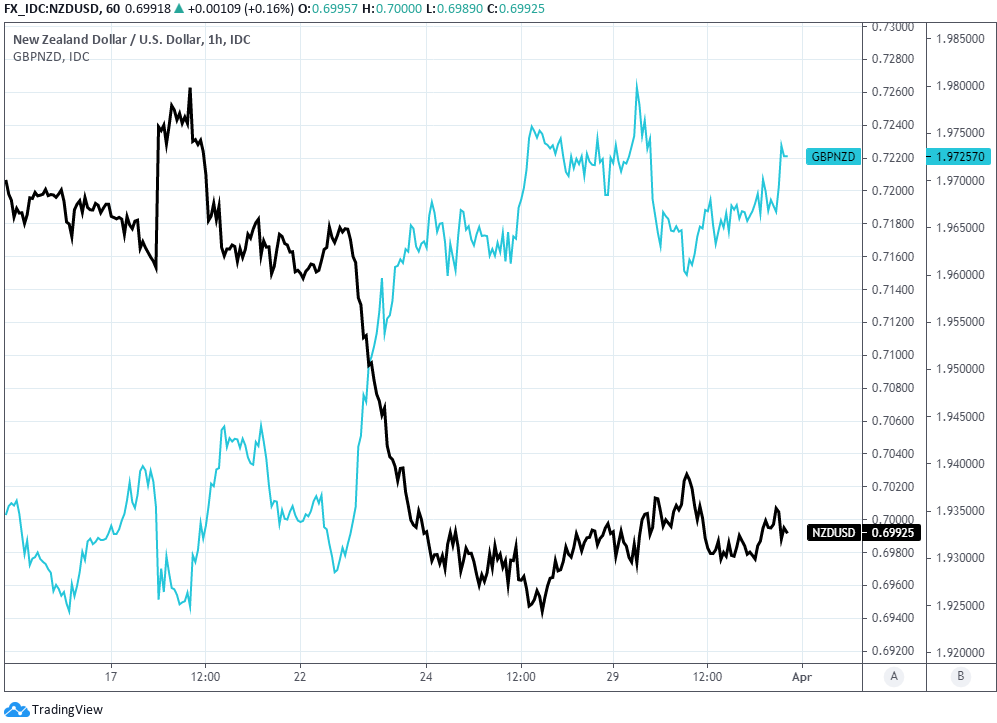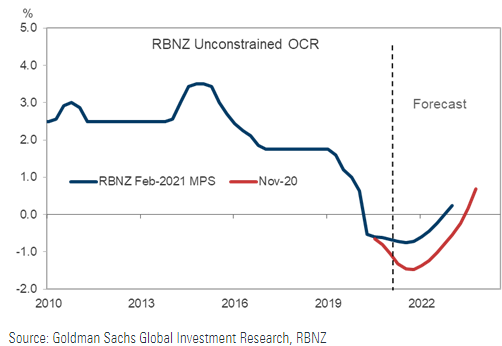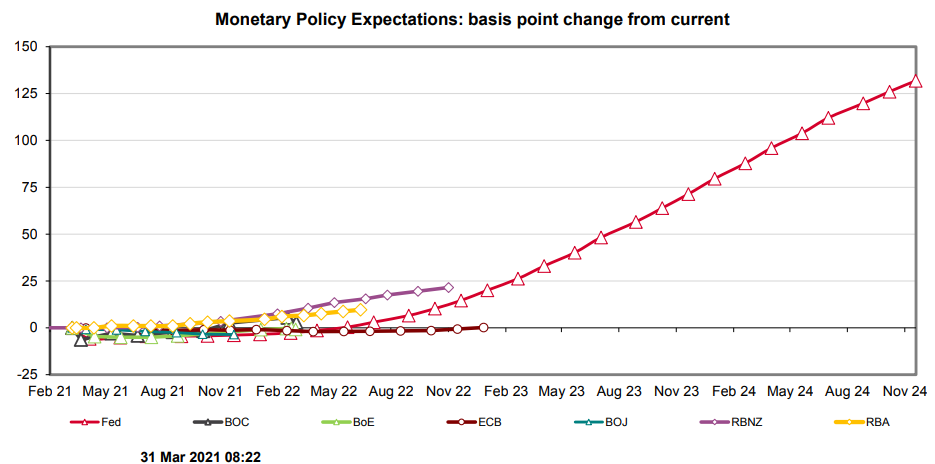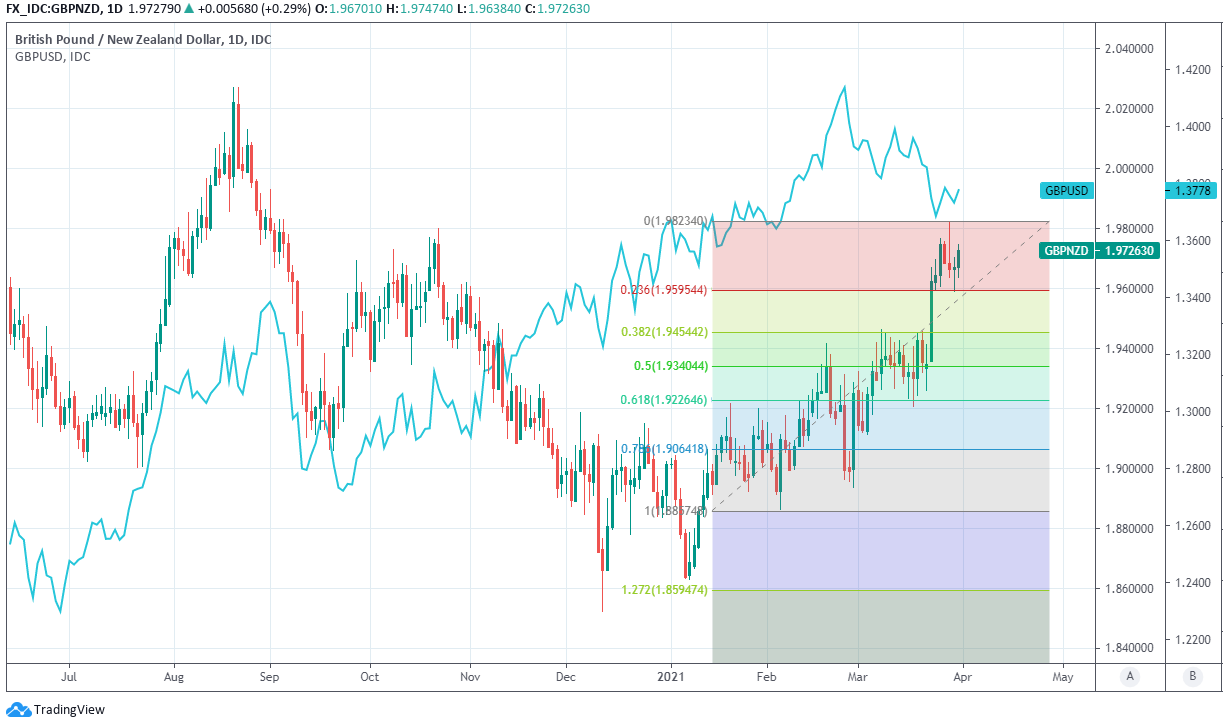New Zealand Dollar's Breakdown Opens Higher Range for GBP/NZD
- Written by: James Skinner
- NZD steadies Vs USD but NZD lags behind many others.
- After housing intervention, GDP miss hit cash rate outlook.
- NZD's lethargy helps lift GBP/NZD into 1.96-to-2.00 range.
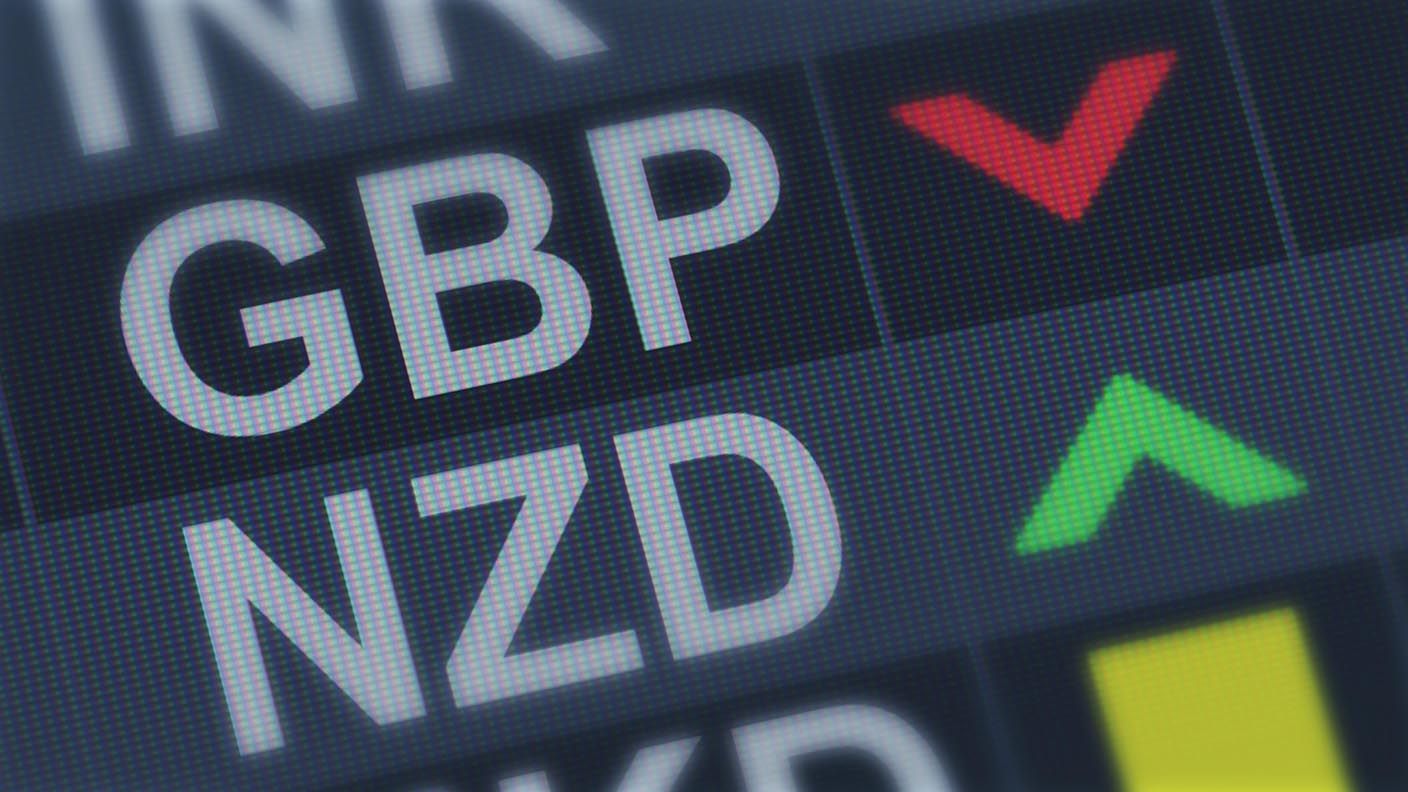
Image © Adobe Stock
- GBP/NZD spot rate at time of writing: 1.9795
- Bank transfer rate (indicative guide): 1.9102-1.9240
- FX specialist providers (indicative guide): 1.9183-1.9500
- More information on FX specialist rates here
- Set an exchange rate alert, here
The New Zealand Dollar has stabilised against many peers this week but recent policy changes in Wellington have dealt a lingering blow to appetite for the Kiwi and helped the Pound-to-New Zealand Dollar rate break up into a higher trading range spanning the distance between 1.96 and 2.00.
The Kiwi has risen against most majors this week in a tentative stabilisation that follows an earlier March wounding that still leaves the New Zealand Dollar carrying 2021 losses against the U.S. Dollar, Canadian Dollar, Pound Sterling and Norwegian Krone.
This comes after a fall from grace in which the New Zealand Dollar went from the best performing major currency for the months coming into 2021, to a laggard within the pack after Wellington's move to scrap tax incentives for investors in residential property rubbed salt into wounds sustained over a disappointing final quarter GDP report.
The weaker than expected economic outcome and government's bid to curb runaway house price growth have taken some shine away from the Kiwi.
"The NZ$ continues to consolidate around 0.7000, with near-term risks remaining skewed to the downside. The USD continues to gain, and domestically, the NZ economic data pulse is cooling (with house prices expected to fall in response to fresh government curbs)," says Imre Speizer, head of NZ strategy at Westpac. "Longer term, we remain bullish, with an expected resumption of USD weakness as global growth improves further. That should help lift NZD/USD to 0.76 by year end."
Above: NZD/USD (black) shown at hourly intervals with Pound-to-New Zealand Dollar rate (blue).
The GDP disappointment was driven more by statistical base effects than it was true economic weakness, some economists have said, implying that the outlook for New Zealand's economy is little changed from late last year when the New Zealand Dollar was the better performing major currency.
But with government intervention likely bringing pressure onto house prices, with all that entails for consumer confidence and spending, investors have walked away in March from wagers suggesting the Reserve Bank of New Zealand (RBNZ) would lift the cash rate to 0.55% by August 2022.
That was the implied bet of the overnight-index-swap market on March 01 but by Wednesday this week that market-implied August 2022 cash rate had fallen to just 0.42%. This is likely the culprit for the Kiwi's losses, although few if any analysts see either factors changing the outlook for the Kiwi.
"Markets appear to have viewed these housing measures as likely to result in some tightening in the economy, thereby keeping the RBNZ on hold for longer," says Ian Tomb, a vice president of global markets research at Goldman Sachs. "This will depend on how much actual tightening of economic conditions the NZ government’s new measures will lead to, but on balance, given the other considerations, we see risks as tilted toward higher yields from here."
The Kiwi's earlier outperformance came only after the RBNZ began to indicate in November that it was no longer so keen on the idea of adopting a negative interest rate, which is the recent context against which investors have judged the GDP disappointment and housing market intervention.
Above: Clicking each image will enlarge. RBNZ's cash rate projections (left) and March 2021 market expectations (right). Image © Goldman Sachs, Westpac.
Analysts at Westpac, Goldman Sachs, ANZ and others say these recent developments do little to change their positive outlooks for the Kiwi currency, although for the time being at least the knock to investors' sentiment toward it has proven a boon for the Pound-to-New Zealand Dollar rate.
"NZD/GBP is under pressure again and not looking at risk of breaking out of the downtrend," says David Croy, a strategist at ANZ. "We like the NZ story but it is no longer exceptional, and recovery beckons elsewhere, and that will potentially make NZD/USD gains harder to come by."
The Pound-to-New Zealand Dollar rate rose above 1.96 this week as the Kiwi remained lethargic against all but the lowest yielding currencies, although now above this level, Sterling could now find it offering a form of technical support in response to weakness in future trading,
There's also a Fibonacci retracement around 1.9595, which is a further layer of support for a Pound that has outperformed just as the Kiwi has fallen from grace. Meanwhile, and on the upside, ANZ's Croy says technical resistance is unlikely to bother GBP/NZD ahead of the 2.0 level.
GBP/NZD would reach 2.0 if as NZD/USD consolidates around 0.70 in the manner envisaged by Westpac above, the main Sterling exchange rate GBP/USD returns to 1.40. GBP/USD was quoted at 1.3775 on Thursday.
"April has consistently been the best month for GBP and especially GBP/USD which has rallied by nearly 2% on average. Only Brexit has derailed these flows," says Kamal Sharma, a strategist at BofA Global Research. "The consistency of GBP outperformance over the past 15-years through various phases of the business cycle does indicate that the source of the outperformance is exogenous flow and we think the FTSE 100 is the source."
Above: Pound-to-New Zealand Dollar rate shown at daily intervals with Fibonacci retracements of nascent trend and GBP/USD (blue).

